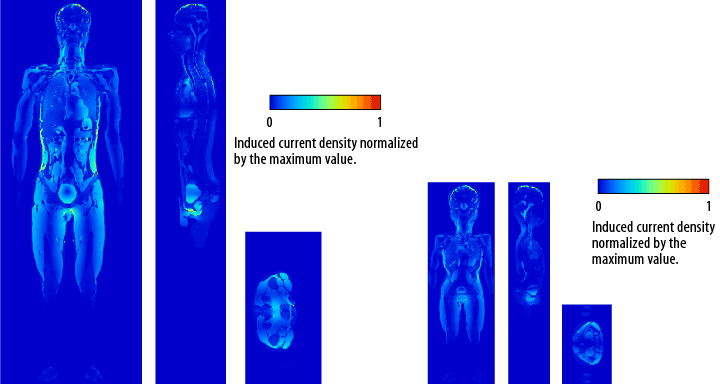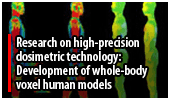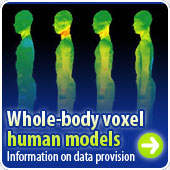Numerical simulation using whole-body voxel human models
Analysis of the intermediate frequency band (300 Hz - 10 MHz)
Use of radio waves in the intermediate frequency range (from 300 Hz to 10 MHz) has been increasing in recent years, such as with RF-ID, EAS (Electronic Article Surveillance) system, and IH (induction heating) cooking hobs. However, not much is known about the effects of intermediate-frequency band radio waves on living organisms, and there is a need to accumulate scientific evidence to assess their impact. Regarding the relevant frequency range, the International Commission on Non-Ionizing Radiation Protection, or ICNIRP, has established basic restrictions on induced current density. At NICT, we use a variety of human-body voxel models, including those of children, to analyze induced current density when exposed to magnetic field in the intermediate frequency band.
Examples of calculating the induced current density distribution in adult male and child voxel models exposed to a uniform magnetic field in the anteroposterior (AP) direction (frequency: 20 kHz)

- Analysis of the VHF/UHF bands (30 MHz - 3 GHz)
- Analysis in the intermediate frequency band (300 Hz - 3 MHz)






